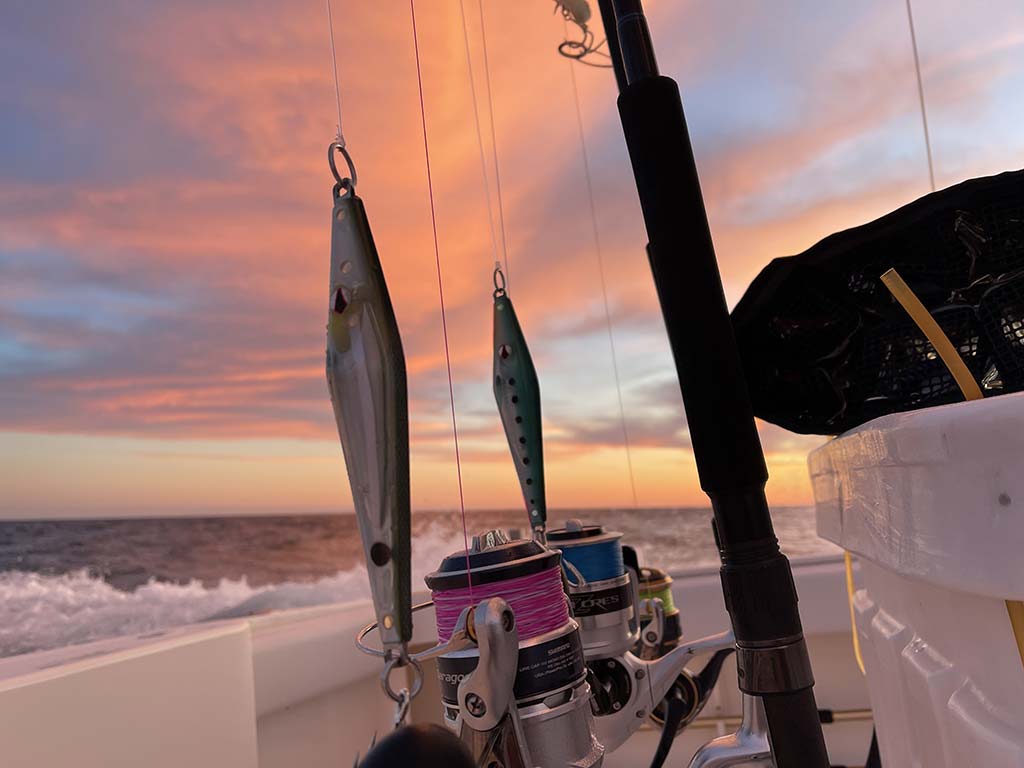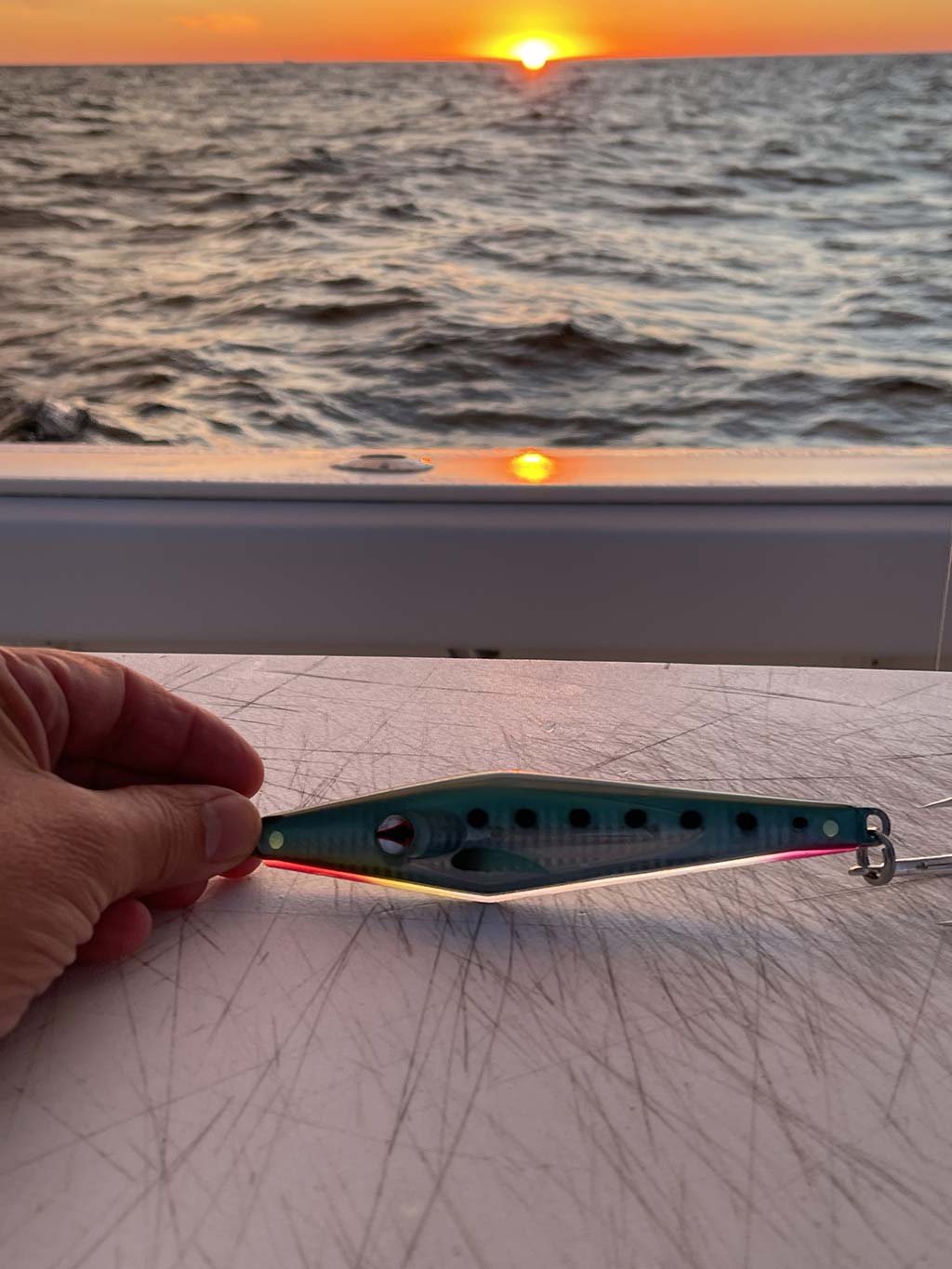A west coast staple finding a new home on the east coast
There always seems to be a battle between the east coast and west coast when it comes to who has the better fishery and how you target species. No matter what coast you belong to, you will inevitably hear someone in a tackle shop say “that only works on the other coast!” That’s only true until some try it.
There’s a new trend starting to happen here in the Northeast, casting “surface Irons” or what’s also referred to as a “swim jig.”
If you ever had the chance to fish the southern California waters between the months of March and November, you will see a line of 8-foot rods and large conventional reels with this weird-looking metal object hooked to the handle of the reel. It does not matter if it is a 3/4-day trip or a 5-day excursion, every angler has their surface iron setup ready to rock. Any SoCal angler you ask will all tell you the same thing, everything eats an iron, doesn’t matter if it’s a yellowtail, tuna, or even wahoo!
Well, guess what? This is also the case here in the Atlantic as well. It doesn’t matter if it’s a bluefish, striper, or tuna, they eat it with the same voracity.

On the other coast, they need to fish 8-foot rods and conventional reels as they are battling 30 other anglers to cast the farthest to get the bite. Here we don’t need to use this method as the majority of our fishing is on private boats. You just need to outcast your buddy that you’re fishing with that day. It is okay to fish a 7- to 8-foot rod with a spinning reel to stay in your comfort zone. I personally prefer a rod over 7-1/2 feet as it does add distance to your cast.
Today’s offshore popping and stick bait rods are perfect for these sub-surface swimmers. The rod does need the capability to cast something that weighs between 4 and 4-1/2 ounces.
As noted, this surface iron looks very weird—it’s a piece of metal that has a flat side, and then the other side has what looks like a belly. Along with its abnormal shape, you will find its edges to be quite different. If you were to grab one, it looks like something we would drop vertically to jig. This is far from its intended use. Cast this lure into any fishy situation and just start reeling. From that point, the lure takes over as it has a nice side-to-side swimming motion with an erratic tail kick. There is no jerking of the rod like you would a popper or a stick bait, just a nice slow retrieve.
Basically, the tip of the rod will tell you if you are retrieving at the correct speed. If cranking too slow, which is hard to do, the tip will look like there is dead weight hanging from it. The complete opposite happens if you are retrieving it too fast as the lure comes to the surface and skips along the top. The best way I have found to fish this type of lure is to let it sink for a one or two count, drop the tip close to the water and start retrieving. Don’t let the excitement of fish blowing up on the surface influence your retrieve. Slow and steady will win the bite.

In what situations would I choose a surface iron? My answer is very simple—the same situation where you use a stick bait or popper. You have birds working on the surface or fish busting— this is a great opportunity to hook up on a surface iron. You can blind cast them as well when you know the fish are suspended in the water column.
Whether targeting inshore blues and stripers to offshore bluefin and yellowfin, just remember that when you do get the bite you don’t set the hook. Just like circle hook fishing, you reel through the bite, then lift the tip to a 45-degree angle to fight the fish.
It doesn’t matter if you are a charter boat captain or a first-time angler the surface iron is a lure that will give you an edge on the other boats in the fleet.
The author, a representative for Nomad Design, is based in New Jersey where he runs offshore out of Little Egg Inlet.


